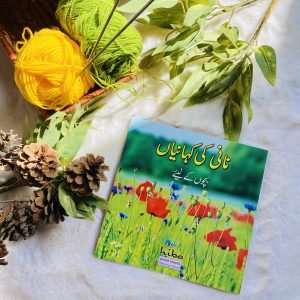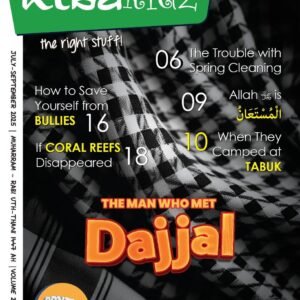Bushra Anwar gives us a glance into the charms and attractions of Iran
There are places you visit, and all you write home about is the massive duty-free shop at the airport. Then, there are places you visit and do not want to go back home. On my recent trip to Tehran, the capital of Iran, it was just that.
From my first expectant drive through the city to my gloomy farewell from the place, I was enchanted. To call Tehran beautiful would be an understatement; it is beauty, charm, splendor, and character rolled into one.
Tehran is an extremely well developed city, with parks, sports complexes, and malls. Vast highways, bridges, underground stations, and flyovers connect the city. The more upscale areas have modern high-rises, glass and chrome offices, and residential buildings with car parking, pools, and other facilities. However, to place Tehran among the typical modern cities would be unjust; it is a perfect blend between ancient architecture, contemporary styles, and natural beauty. Hilly terrains dot the landscape, and long lanes of weaving trees remind of a scenic Parisian avenue. It was a pure pleasure to walk up and down the roads, bordered by hills, gardens, and rocky topography. A snowy, mountainous backdrop completes the allure of the city. In addition, it is dotted with remnants of the old Tehran – huge palaces, ancient structures, and gateways. Not too new to be soulless, not too old to be passed over.
I spent my three days in sightseeing, hobnobbing with the public in Bazars, and, like all tourists, visiting the numerous elaborate palaces of the exiled Shah, viewing the magnificent crown jewels, and, of course, shopping.
Like most modern cities, Tehran has an underground subway, which makes commuting easy and cheap. The taxi service is extremely efficient – just dial the number of the local taxi station, and one will appear at your doorstep almost immediately. Having obtained a friendly English-speaking driver for the day, we told him to take us wherever he thought feasible for first time visitors. We were driven to Sahebqaranian – one of the Shah’s most luxurious palaces. It was overwhelmingly beautiful, with elaborately mirrored halls, lavish imported furniture, office rooms, luxury bed and bath areas, waiting rooms, bars, tearooms, ladies quarters, and vast palace grounds. It started snowing that day and we crunched on the soft snow and fallen leaves with pure pleasure!
The next day, we went to the Central Bank (Bank Markazi Iran), where the Shah’s jewels are kept. The displays were unimaginably dazzling: entire thrones carved in gold and set with shining rubies, emeralds, diamonds, and other precious gemstones; jewelry ranging from tiara’s to bracelets, rings, turban pins, in glittering diamonds and sapphires; velvet robes studded with opals.
One of the most interesting sport activities in Iran is skiing. There are 16 ski resorts in Iran, out of which the most famous one is Dizin. The next day was delightfully cold and snowy, and we spent a lovely day high up in the mountains, tubing down the pristine white snow, balancing on skis, and throwing snowballs. Other popular sports are mountain biking, horseback riding, climbing, desert trekking, mountaineering, diving, and hunting.
Iranians are of the friendliest people I have ever come across. Everyone from the bookseller (who refused to accept payment for my postcards) to my bus companion (who insisted on paying my subway ticket) and the museum guide (who struggled to translate for us in English) were truly courteous, helpful, and extremely welcoming. It was a delight to walk through the crowded Bazars, mixing with the people. Language, however, is a barrier – it is difficult to find people, who speak English.
Yet, among the best things about Tehran is absolute safety – the highest form of crime in the city is ‘overcharging by a shop owner’. Even a young lady walking on a deserted Tehran street at 3 am has no fear of being molested.
Iranian specialty food boasts of Sumaq or dried pomegranate with lamb Kababs and roasted tomatoes. Restaurants and eateries are aplenty. For the tourist, Iran is extremely easy on the wallet, unless you plan on taking back with you Persian carpets, which the country is famous for!
Other cities to visit are:
Shiraz – often regarded as one of the most attractive of Iranian cities; situated 919 Km south of Tehran.
Isfahan – has been designated by UNESCO as a world heritage site.
Gorgan – in northern Iran, has good air, railroad and road access. Entering or leaving by land between Iran and Turkmenistan is open to both Iranian and foreign travelers.
Mashhad – (mah-shahd), meaning place of martyrdom, is the capital of Khorasan province, located 850 km north east of Tehran, near the border of Turkmenistan.
Qom – located some 120 km south west of Tehran. Sometimes considered the religious capital of the Iran, Qom hosts the tomb of Hazrat Masumeh, sister of Imam Reza. Many religious schools, dedicated to Islamic teachings, are located around the sanctuary of Hazrat Masumeh.
Tabriz – founded during the Sassanid period; located 597 km north west of Tehran.
Temperature: 9C min.- 42C max.


